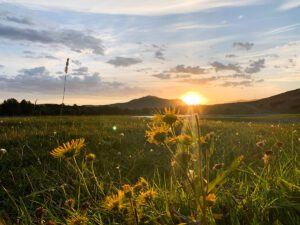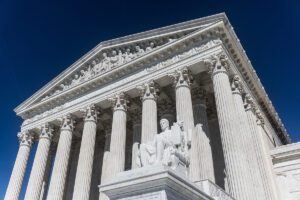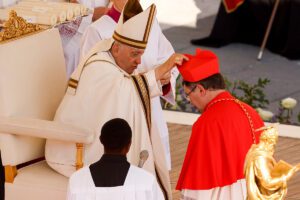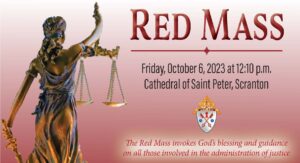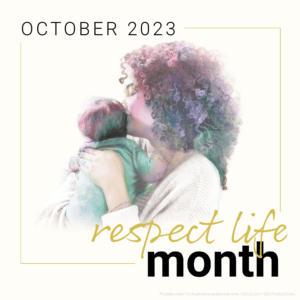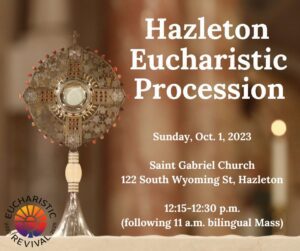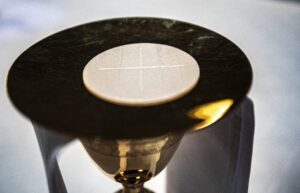VATICAN CITY (CNS) – Pope Francis opened the work of the assembly of the Synod of Bishops asking members to meditate on ancient theological texts about the Holy Spirit, have the courage to be honest about their disagreements and focus much more on listening than on sharing their opinions.
The synodal process “is not easy, but it’s beautiful, very beautiful,” Pope Francis told some 364 other synod members and 85 non-voting experts, ecumenical delegates and facilitators the afternoon of Oct. 4 as the synod work began in the Vatican audience hall.
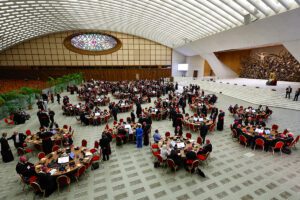
“A certain asceticism” is needed for the synod, the pope said. He asked forgiveness from journalists trying to cover the monthlong meeting but insisted “a certain fasting from public words” would be needed to ensure the proper spiritual atmosphere for the synod members.
And, in fact, the synod rules distributed that evening said, “In order to guarantee the freedom of expression of each and all regarding their thoughts and to ensure the serenity of the discernment in common, which is the main task entrusted to the assembly, each of the participants is bound to confidentiality and discretion regarding both their own interventions and the interventions of other participants.”
Pope Francis also repeated what he has said many times: “the synod is not a parliament” where the ideas of opposing parties will be debated and voted up or down along party lines. Neither, he said, is it “a meeting of friends” getting together to exchange opinions and try to solve problems they see around them.
“The synod is a journey that the Holy Spirit makes,” he said, so constant prayer and listening are necessary to follow the path the Spirit indicates.
“The Holy Spirit triggers a deep and varied dynamism in the Christian community, the confusion of Pentecost,” when people from every nation heard the disciples speaking in their own languages, the pope said. From the experience, the Spirit creates not uniformity, but harmony.
Differences of opinion will surface, he said. “If you don’t agree with what that bishop or that nun or that lay person says, say it to their face. That’s what the synod is for. To tell the truth, not the chatter under the table.”
Pope Francis also acknowledged how people outside the synod members are offering “hypotheses about this synod — ‘But what will they do there?’ ‘The priesthood for women?’ — these are the things that are being said outside.”
But what is happening, he said, is that the universal church has gathered in Rome to pause and to listen.
“The church has stopped, as the apostles stopped after Good Friday, on that Holy Saturday,” closed in the Upper Room, he said. “But they were afraid; we are not. … It is a pause for the whole church to listen.”
Cardinal Mario Grech, secretary-general of the synod, told the members, “Today the church is at a crossroads, and the urgent challenge, strictly speaking, is not of a theological or ecclesiological nature, but how at this moment in history the church can become a sign and instrument of God’s love for every man and woman.”
“God’s love is the medicine that can heal today’s wounded humanity, and as the church our mission is to be a sign of this love,” he said.
In discerning the best ways to do that, Cardinal Grech said, participants should remember the assembly is not “an isolated act,” but part of a process that began two years ago with local, diocesan, national and continental listening sessions.
The presence of members who are not bishops — some 70 priests, religious, lay men and women — is not meant to represent “the totality of the People of God,” he said, but to “remind us with their presence” of the whole synod process and its invitation for all Catholics to participate, sharing their experiences of things that help or hinder their sense of communion, participation and mission.
Cardinal Jean-Claude Hollerich, relator general of the synod, noted how the members were gathered at round tables in the Vatican audience hall rather than in the rows of the synod hall to promote conversation but also to remind them of similar experiences they had at listening sessions in their parishes and dioceses.
“Bishops who were not very active in the process but have been elected by their (bishops’) conferences,” he said, “may face challenges at the beginning. On the other hand, there are the members who are not bishops. Many among them were particularly involved in the continental stage of this synod and are called to testify their experience.”
In the synod discussions, he urged members to remember that each person, with his or her differences, is a Christian trying to follow the Lord.
“The church is the people of God, walking through history, with Christ in her midst,” Cardinal Hollerich said. “It is only normal that there is a group walking at his right, another at his left, while some run ahead and others lag behind.”
From any of those positions, he said, when a person looks at the Lord, “they cannot help but see the group that is doing the opposite: those walking on the right will see those walking on the left, those running ahead will see those lagging behind.”
“In other words, the so-called progressives cannot look at Christ without seeing the so-called conservatives with him and vice-versa,” he said. “Nevertheless, the important thing is not the group to which we seem to belong, but walking with Christ within his church.”

